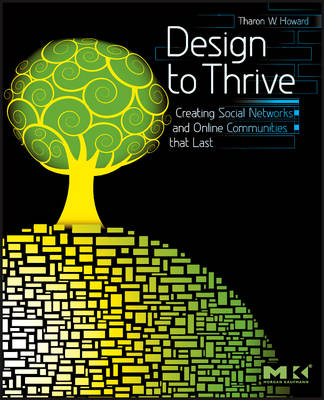
Design to Thrive
Morgan Kaufmann Publishers In (Verlag)
978-0-12-374921-5 (ISBN)
Social networks and online communities are reshaping the way people communicate, both in their personal and professional lives. What makes some succeed and others fail? What draws a user in? What makes them join? What keeps them coming back? Entrepreneurs and businesses are turning to user experience practitioners to figure this out. Though they are well-equipped to evaluate and create a variety of interfaces, social networks require a different set of design principles and ways of thinking about the user in order to be successful. Design to Thrive presents tried and tested design methodologies, based on the author’s decades of research, to ensure successful and sustainable online communities -- whether a wiki for employees to share procedures and best practices or for the next Facebook. The book describes four criteria, called "RIBS," which are necessary to the design of a successful and sustainable online community. These concepts provide designers with the tools they need to generate informed creative and productive design ideas, to think proactively about the communities they are building or maintaining, and to design communities that encourage users to actively contribute.
With over 30 years of experience researching and effectively applying social networks, Tharon W. Howard is a nationally recognized leader in the field. He is a Professor at Clemson University where he teaches in the doctoral program in Rhetoric(s), Communication, and Information Design and the Master of Arts in Professional Communication program. As Director of the Clemson University Usability Testing Facility, he has conducted sponsored research aimed at improving and creating new software interfaces, online document designs, and information architectures for clients including IBM, NCR Corp., AT&T, Time-Warner, etc. Howard is the author of A Rhetoric of Electronic Communities, co-author of Visual Communication: A Writer’s Guide, co-editor of Electronic Networks: Crossing Boundaries and Creating Communities.
1. IntroductionI. Why are virtual communities and social networks so popular?II. History of virtual communities (spans 30 years -- what is fad and what is not)III. Business justification for implementing virtual communitiesIV. Differences between “adhocracy, a “forum, a “group, a “virtual team, a “social network, and a “virtual community? People are often sloppy with their use of these terms, which creates problems for designers. 2. What are the factors needed for sustainable online communities?I. What is a “heuristic and why do we need one?II. RIBS theory/process3. RemunerationI. What is “remuneration?II. Case studies / popular examples?III. What are some best practice strategies for ensuring remuneration is functioning?4. InfluenceI. What is “influence?II. Case studies / popular examples?III. Best practice strategies for ensuring influence is functioning?5. BelongingI. What is “belonging?II. Case studies / popular examples?III. Best practice strategies for ensuring remuneration is functioning?6. SignificanceI. What is “significance?II. Case studies / popular examples?III. Best practice strategies for ensuring significance is functioning?7. ConclusionI. Summative discussion — lessons learned and how to apply them to designers’ workII. How RIBS can be used to think about designing for emerging media and delivery systems—particularly those involving mobile computing and videoIII. RIBS’ potential for the future of virtual community and social interface design
| Verlagsort | San Francisco |
|---|---|
| Sprache | englisch |
| Maße | 191 x 235 mm |
| Gewicht | 610 g |
| Themenwelt | Mathematik / Informatik ► Informatik ► Grafik / Design |
| Mathematik / Informatik ► Informatik ► Netzwerke | |
| Mathematik / Informatik ► Informatik ► Web / Internet | |
| ISBN-10 | 0-12-374921-2 / 0123749212 |
| ISBN-13 | 978-0-12-374921-5 / 9780123749215 |
| Zustand | Neuware |
| Haben Sie eine Frage zum Produkt? |
aus dem Bereich


